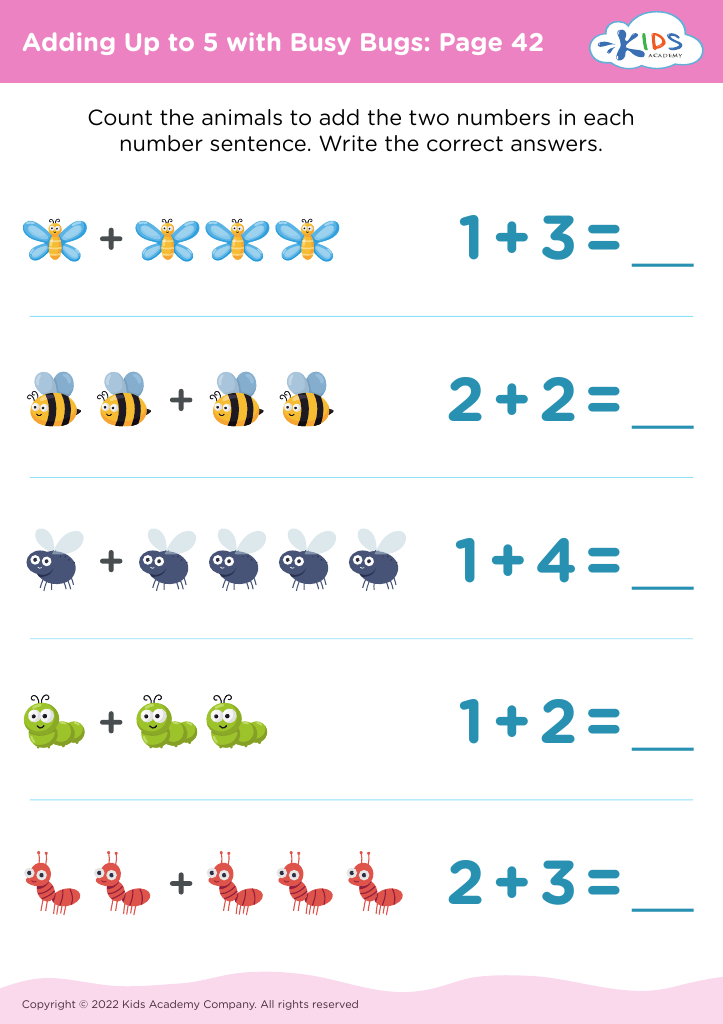Visual perception Adding with Busy Bugs Worksheets for 5-Year-Olds
3 filtered results
-
From - To
Discover our "Visual Perception Adding with Busy Bugs Worksheets for 5-Year-Olds" designed to make learning math fun and engaging. These vibrant, bug-themed worksheets enhance visual perception skills while practicing basic addition. Perfect for little learners, they combine counting colorful bugs with simple addition problems, fostering critical thinking and problem-solving abilities. Ideal for preschool and kindergarten students, these printables support early math foundations and cognitive development. Dive into a world of busy bugs and boost your child's confidence and proficiency in math with Kids Academy's expertly crafted worksheets!
Visual perception is a crucial developmental skill for young children, forming the foundation for many aspects of learning and everyday activities. "Busy Bugs," a visual perception adding activity, can be immensely beneficial for 5-year-olds, as it combines the elements of fun, engagement, and educational value.
Firstly, it fosters essential math skills through interactive play. At the age of five, developing an understanding of numbers and basic addition is fundamental. Using visual aids like colorful bugs helps make abstract concepts more concrete, enabling children to grasp addition more intuitively.
Secondly, this type of activity enhances fine motor skills and coordination. Handling small objects to create sums strengthens their hand-eye coordination, preparing them for writing and other precise tasks.
Thirdly, visual activities like "Busy Bugs" improve attention to detail and concentration. Children learn to focus on the characteristics and positions of objects, which can boost their observational skills and ability to concentrate for prolonged periods.
Lastly, incorporating visual perception activities into learning leverages children's natural curiosity and playfulness. Engaging, colorful activities are more likely to capture and hold their interest, making the learning process enjoyable and effective. Parents and teachers investing time in such activities can help foster a love for learning, establish a strong math foundation, and develop key cognitive and motor skills in young learners.














